December 20, 2016

University of Maryland Medical Center Patients with Hypoplastic Left Heart Syndrome Receive Bone Marrow Stem Cells
In a first-in-children randomized clinical study, medical researchers at the University of Maryland School of Medicine (UM SOM) and the Interdisciplinary Stem Cell Institute (ISCI) at the University of Miami Miller School of Medicine have begun testing to see whether adult stem cells derived from bone marrow benefit children with the congenital heart defect hypoplastic left heart syndrome (HLHS).
UM SOM surgeons are injecting the cells into the babies’ hearts during open-heart operations at the University of Maryland Medical Center. ISCI is supplying the stem cells for the procedures.
Even with extensive surgical treatments, HLHS babies still do not have optimal outcomes. The researchers hope the cells will increase the babies’ chances of survival as HLHS limits the heart's ability to pump blood from the heart to the body.
“The premise of this clinical trial is to boost or regenerate the right ventricle, the only ventricle in these babies, to make it pump as strongly as a normal left ventricle,” says lead researcher Sunjay Kaushal, MD, PhD, associate professor of surgery, University of Maryland School of Medicine and director, pediatric cardiac surgery, University of Maryland Medical Center. “We are hoping this therapy will be a game-changer for these patients.”
Kaushal says the first two patients, who were both four-months-old when the stem cells were injected, are doing well after their surgery.
Mesenchymal Stem Cells
This is the first HLHS research in the United States to use stem cells known as allogeneic mesenchymal stem cells (MSC). Allogeneic cells can be used in other human beings without creating an immune response, which could cause the body to reject the cells. Additionally, these cells are a type of adult stem cell (found in both children and adults), unspecialized cells that can develop into tissue- or organ-specific cells. MSCs can be harvested in advance, expanded in culture, and stored for use later.
The allogeneic nature of the MSCs makes it possible for stem cells from one bone marrow donor to provide all the stem cells for this study. Researchers elsewhere are taking a different approach to strengthen the HLHS heart, with autologous cells, stem cells taken from the HLHS patient's own umbilical cord, for use in that specific patient.
In adult patients, MSCs in the heart have been shown to reduce scar tissue, reduce inflammation, cause new small vessels to grow, and stimulate the heart to regenerate itself, causing heart muscle cells and cardiac stem cells to grow.
"We've had incredible results in using mesenchymal stem cells to regenerate damaged heart muscle in adults," says Joshua M. Hare, MD, ISCI founding director and sponsor of the study. “This is the first time these types of cells are being used in infants, so this is very exciting.”
The Interdisciplinary Stem Cell Institute has grown from a local research center to a national cell manufacturing facility. ISCI provides cells for the Cardiovascular Cell Therapy Research Network, has been named a Production Assistance for Cellular Therapies Center by the National Heart, Lung and Blood Institute, and has been conducting research in stem cell use for cardiovascular repair since 2008.
Study Details
HLHS is one of the most challenging and complex congenital heart diseases to treat. The Centers for Disease Control and Prevention (CDC) estimates that about 960 babies in the United States are born each year with HLHS. For unknown reasons, the heart’s main pumping chamber, the left ventricle, does not develop completely during a critical growth period just prior to birth. The right ventricle normally pumps blood to the lungs at low pressure to be oxygenated, while the left ventricle pushes blood at high pressure through the aorta to the entire body. In children with HLHS, the right heart assumes the extra workload, temporarily supporting the circulation to both the lungs and body. That stress can cause the right heart to fail and the baby to die.
Current HLHS treatment options are either a heart transplant or a series of three open-heart reconstructive surgical procedures to connect the left and right sides of the heart. However, even with a transplant or the reconstructive surgical series, children with HLHS have an average five-year survival of only 50-60 percent.
In this Phase 1 safety and efficacy study, allogeneic MSCs are injected into the heart muscle during the second of the three reconstructive surgeries, typically performed at approximately four months of age.
A total of 30 patients with HLHS will be enrolled in the study. Fifteen patients will receive six-to-eight stem cell injections each, based on the size of the heart, while 15 control patients will not receive the cells. This is an open-label trial, in which researchers and participant families will know whether or not the cells are administered.
Basic Science
Kaushal laid the groundwork for this trial eight years ago as he began exploring the possibilities of stem cells to strengthen children’s hearts. Kaushal says he and his team developed many models trying to understand how these cells work in the laboratory before moving to a clinical application. “There’s a lot of basic science behind what we’re doing. I want to make sure that what we pursue is rigorous in the laboratory, to make sure that we’re providing the best therapy for these little kids.”
Several researchers at the School of Medicine’s University of Maryland Center for Stem Cell Biology & Regenerative Medicine have added their expertise to the effort, collaborating with Dr. Kaushal to understand and develop stem cell therapy for children with heart failure.
“Dr. Kaushal and colleagues have discovered that the failing neonatal heart is actually a rich source of cardiac stem cells, but the existing stem cells in the hearts of these babies are not sufficient to overcome HLHS,” says Curt I. Civin, MD, professor of pediatrics and physiology, director of the Center for Stem Cell Biology & Regenerative Medicine, and Associate Dean for Research at the University of Maryland School of Medicine. “We are close to understanding one mechanism underlying this insufficiency. This line of research is a key part of our quest to use stem cells to repair, cure and prevent severe diseases in children and adults.”
In previously published research, Kaushal demonstrated that mesenchymal stem cells can restore function in a pre-clinical model replicating many of the features of HLHS. The stem cells remodeled the heart muscle (myocardium) similar to normal myocardium. Stem cells in the heart may also secrete growth factors conducive to forming heart muscle and keeping the muscle from dying. “These key findings suggested these cells would work for HLHS patients,” says Kaushal.
While stem cells have been used to regenerate adult hearts, Kaushal says improvements have been marginal. His research suggests results may be better in pediatric hearts: “The heart is able to remodel better in a younger patient than an older patient, because the body is still growing, good things are going on, and things are not deteriorating.”
Civin, a pediatric oncologist, says his very first patient as a pediatric intern-in-training years ago was an infant with HLHS. “I’ve seen how devastating HLHS can be for babies and their families. I’m thrilled with the launch of this first-in-children stem cell therapeutic trial, and look forward to the patient outcomes.”
The Department of Surgery at the University of Maryland School of Medicine is providing funding for the clinical costs associated with this trial. “Dr. Kaushal’s research will give families with a devastating diagnosis hope for a better outcome for their child,” says Stephen T. Bartlett, MD, the Peter Angelos Distinguished Professor; Chair of the Department of Surgery at the University of Maryland School of Medicine; and Surgeon-in-Chief and Executive Vice President of the University of Maryland Medical System. “The Department of Surgery’s funding of this project demonstrates the critical need and the promise this research holds for a very at-risk population who only have a 50/50 shot at survival with current treatment protocols.”
“This novel therapeutic approach exemplifies how our faculty are unrelenting in their search for new ways to improve the health of some of our tiniest and most vulnerable patients,” says E. Albert Reece, MD, PhD, MBA, vice president for medical affairs, University of Maryland; the John Z. and Akiko K. Bowers Distinguished Professor; and dean, University of Maryland School of Medicine.” This stem cell therapy may provide a new treatment option not just for patients with HLHS, but also for patients with other congenital heart problems.”
For more details on this study, see identifier NCT02398604 on clinicaltrials.gov.
About the University of Maryland School of Medicine
The University of Maryland School of Medicine was chartered in 1807 and is the first public medical school in the United States. It continues today as an innovative leader in accelerating innovation and discovery in medicine. The School of Medicine is the founding school of the University of Maryland and is an integral part of the 11-campus University System of Maryland. Located on the University of Maryland’s Baltimore campus, the School of Medicine works closely with the University of Maryland Medical Center and Medical System to provide a research-intensive, academic and clinically based education. With 43 academic departments, centers and institutes and a faculty of more than 3,000 physicians and research scientists plus more than $400 million in extramural funding, the School is regarded as one of the leading biomedical research institutions in the U.S. with top-tier faculty and programs in cancer, brain science, surgery and transplantation, trauma and emergency medicine, vaccine development and human genomics, among other centers of excellence. The School is not only concerned with the health of the citizens of Maryland and the nation, but also has a global presence, with research and treatment facilities in more than 35 countries around the world. http://medschool.umaryland.edu.
About the University of Maryland Medical Center
The University of Maryland Medical Center (UMMC) is comprised of two hospitals in Baltimore: an 800-bed teaching hospital – the flagship institution of the 12-hospital University of Maryland Medical System (UMMS) – and a 200-bed community teaching hospital, UMMC Midtown Campus. UMMC is a national and regional referral center for trauma, cancer care, neurocare, cardiac care, diabetes and endocrinology, women’s and children’s health, and has one of the largest solid organ transplant programs in the country. All physicians on staff at the flagship hospital are faculty physicians of the University of Maryland School of Medicine. At UMMC Midtown Campus, faculty physicians work alongside community physicians to provide patients with the highest quality care. UMMC Midtown Campus was founded in 1881 and is located one mile away from the University Campus hospital. For more information, visit www.umm.edu.
Learn More
Contact
Office of Public Affairs
655 West Baltimore Street
Bressler Research Building 14-002
Baltimore, Maryland 21201-1559
Contact Media Relations
(410) 706-5260
Related stories
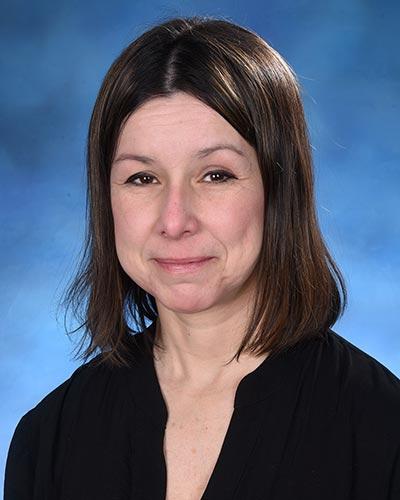
Friday, December 15, 2023
UMSOM Researchers Discover First Ever Link Between Hemoglobin-Like Protein and Normal Cardiac Development
In a landmark study led by the University of Maryland School of Medicine, researchers discovered for the first time that a certain kind of protein similar to hemoglobin, called cytoglobin, plays an important role in the development of the heart. Specifically, it affects the correct left-right pattern of the heart and other asymmetric organs. The findings, published today in the journal Nature Communications, could eventually lead to the development of new therapeutic interventions to alter the processes that lead to these defects.

Thursday, May 21, 2020
UM School of Medicine Begins First Innovative Trial of Experimental Stem Cell Therapy to Reduce Deaths in Sickest COVID-19 Patients
Researchers at the University of Maryland School of Medicine (UMSOM) have begun testing an experimental stem cell therapy developed by Mesoblast Limited to treat hospitalized COVID-19 patients with moderate to severe acute respiratory distress syndrome (ARDS) who are on ventilators to help them breathe. The trial, which is being conducted at the University of Maryland Medical Center (UMMC) and additional sites across the U.S, will involve a total of 300 patients randomized to receive either the drug remestemcel-L or a placebo in addition to the recommended standard of care to manage severe COVID-19 infections. The first patient in this national trial was treated at UMMC.
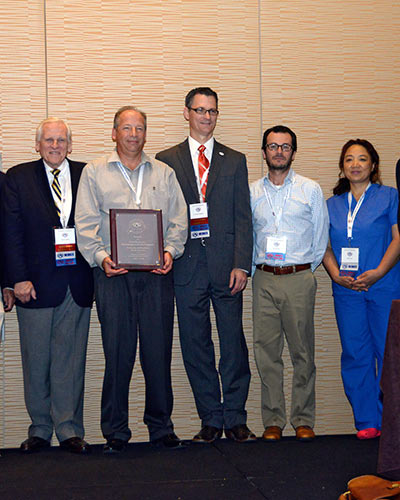
Tuesday, September 26, 2017
University of Maryland Medicine Receives Prestigious Award For Its Heart and Lung Resuscitation Program
A heart and lung resuscitation program at University of Maryland Medicine (UMM) has been recognized for its elite level of care by a leading group in the field.

Monday, September 11, 2017
New Study Shows Novel Collaborative Intensive Care Can Significantly Improve Treatment for Heart Patients – and Cut Costs
Researchers at the University of Maryland School of Medicine (UM SOM) have found that a new, collaborative treatment model for seriously ill heart patients with breathing difficulties results in better care and lower costs.
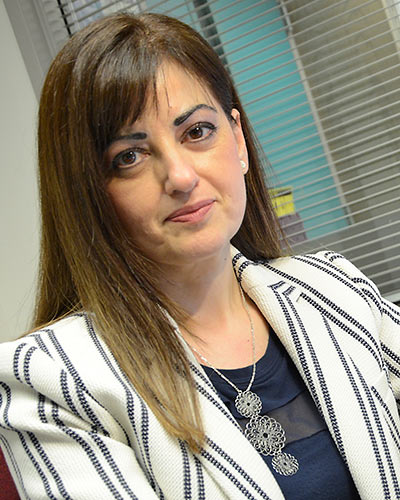
Wednesday, June 07, 2017
University of Maryland School of Medicine Researchers Identify Gene That May Play a Central Role in Heart Disease
Heart disease kills more than 600,000 Americans every year, which translates to more than one in every four deaths. Although lifestyle choices contribute to the disease, genetics play a major role. This genetic facet has remained largely mysterious. But new research by scientists at the University of Maryland School of Medicine (UM SOM) has identified what may be a key player: a mutated gene that leads to irregular heartbeat, which can lead to a dangerously inefficient heart.
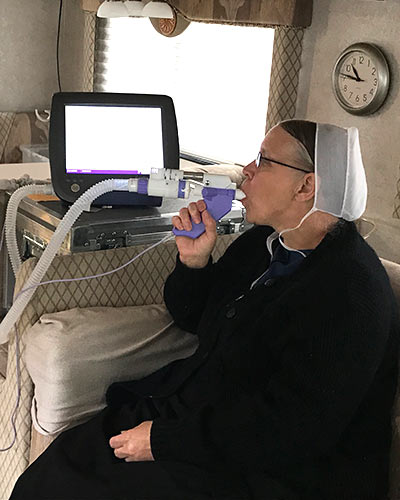
Friday, May 05, 2017
Secondhand Smoke Ups Heart Disease in Unique Group of Female Nonsmokers – Amish Women
New research at the University of Maryland School of Medicine (UM SOM) has found that secondhand smoke tends to have somewhat different effects on men and women. The research, conducted in a Pennsylvania Amish community where virtually no women smoke, found that women who were exposed to secondhand smoke had a greater risk for cardiovascular disease, while men exposed to secondhand smoke tended to have a higher body mass index (BMI).
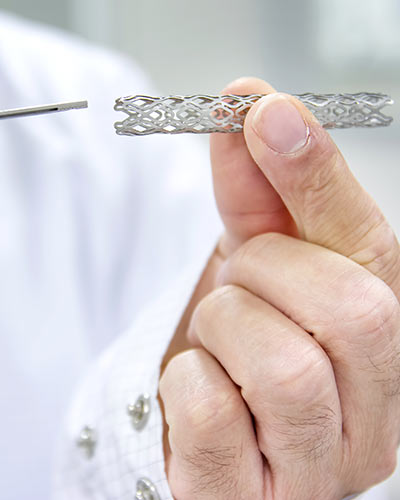
Wednesday, January 11, 2017
University of Maryland Medical Center Offers Genetic Testing as Standard of Care to Help Improve Outcomes for Heart Stent Patients
The University of Maryland Medical Center (UMMC) is now offering a simple genetic test to patients who receive heart stents to determine whether they have a genetic deficiency that affects how they respond to a common drug to prevent blood clots. Patients are typically given the medication, clopidogrel, to prevent cardiovascular events after having a stent placed in a coronary artery to treat a blockage.
